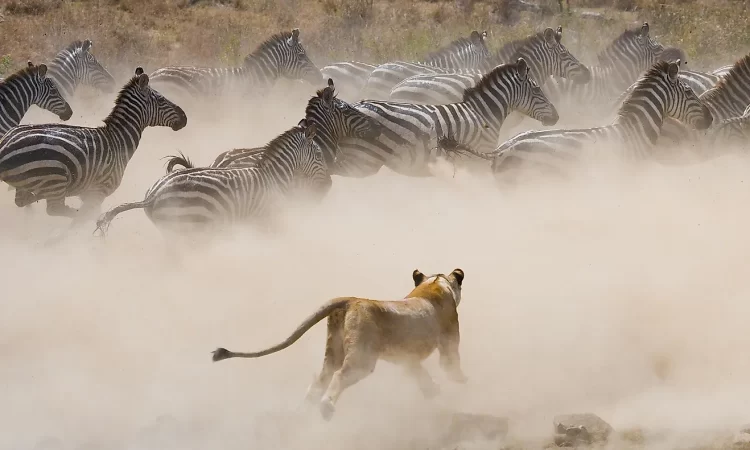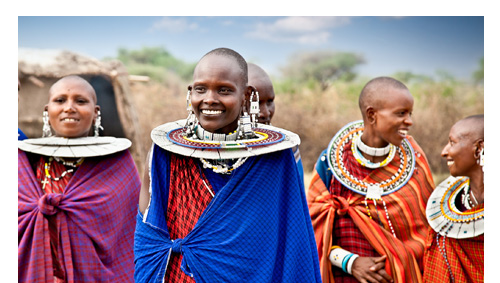Serengeti National Park : A Wildlife Safari in East Africa : The Serengeti National Park, located in East Africa, is a world-renowned destination for wildlife enthusiasts and nature lovers. Spanning an area of approximately 14,750 square kilometers (5,700 square miles) in northern Tanzania, the Serengeti is a UNESCO World Heritage Site and one of the most iconic safari destinations on the planet. This vast wilderness offers an unparalleled opportunity to witness the remarkable biodiversity and the incredible spectacle of the Great Wildebeest Migration. In this comprehensive travel article, we will delve into the enchanting world of the Serengeti and explore the various facets of a wildlife safari in this captivating East African gem.

Understanding the Serengeti:
The Serengeti is situated primarily in the Serengeti ecosystem, which extends into neighboring Kenya’s Maasai Mara Reserve. This expansive region is characterized by its diverse landscapes, including vast grasslands, acacia woodlands, rocky outcrops known as kopjes, and seasonal marshes. The diverse habitats support a wide range of wildlife species, making the Serengeti a truly remarkable destination for safari enthusiasts.
The Serengeti is renowned for its exceptional wildlife populations. The park is home to the Big Five (elephant, lion, leopard, buffalo, and rhino), as well as a multitude of other species, including cheetahs, giraffes, zebras, wildebeests, hyenas, and countless bird species. One of the most remarkable aspects of the Serengeti is the annual Great Wildebeest Migration, where millions of wildebeests, zebras, and gazelles undertake a perilous journey in search of fresh grazing lands, providing a once-in-a-lifetime spectacle for visitors.
The Serengeti’s exceptional wildlife and unique ecosystems are carefully preserved through conservation efforts. The park’s establishment in 1951 was a significant step in protecting its natural heritage, and it has since been designated as a national park and a UNESCO World Heritage Site. The Serengeti ecosystem benefits from ongoing initiatives to combat poaching, promote sustainable tourism practices, and ensure the long-term survival of its diverse wildlife.
Planning Your Serengeti Safari:
The Serengeti National Park offers remarkable wildlife sightings year-round, but the best time to visit may vary depending on your specific interests. If witnessing the Great Wildebeest Migration is your priority, consider planning your trip between December and July when the herds are on the move. For those seeking predator action, the dry season from June to October offers better opportunities as animals gather around water sources.
Several safari options are available for exploring the Serengeti. From guided game drives in 4×4 vehicles to walking safaris, hot air balloon rides, and even photographic safaris, there is something to suit every traveler’s preferences. Consider your interests, budget, and desired level of adventure when choosing the safari experience that suits you best.
The Serengeti offers a range of accommodation options to suit different budgets and preferences. From luxury lodges and tented camps to more affordable campsites, there are choices for every traveler. Staying within or near the park allows for a more immersive experience, providing opportunities for sunrise and sunset game drives and the sounds of wildlife during the night.
Experiencing the Serengeti:
Game drives are the quintessential way to explore the Serengeti National Park. Skilled guides and drivers take visitors deep into the park, following the wildlife trails and ensuring incredible sightings. Whether it’s witnessing a lioness on the hunt, a leopard perched on a tree branch, or a massive herd of elephants crossing the savannah, game drives provide endless opportunities for wildlife encounters and breathtaking photography.
The Great Wildebeest Migration is undoubtedly one of nature’s greatest spectacles. Witnessing thousands of wildebeests, zebras, and gazelles braving crocodile-infested rivers and traversing vast grasslands is a sight that will forever be etched in your memory. By timing your visit during the migration, you can witness dramatic river crossings and the raw intensity of the African wilderness.
For a unique perspective of the Serengeti, consider embarking on a hot air balloon safari. Drifting silently above the plains at dawn, you can witness the waking savannah and the abundant wildlife below. The breathtaking aerial views provide an unforgettable experience and excellent photo opportunities.
For a more immersive and intimate experience, guided walking safaris are available in specific areas of the Serengeti. Accompanied by experienced guides, you can explore the intricacies of the ecosystem, learn about the smaller flora and fauna, and gain a deeper appreciation for the natural world.
Cultural Encounters:
In addition to its remarkable wildlife, the Serengeti National Park region is also rich in cultural heritage. Interacting with the Maasai people, one of Africa’s most iconic indigenous tribes, offers a unique insight into their traditional way of life. Engage in cultural visits to Maasai villages, witness their vibrant dances, and learn about their age-old customs and traditions.

Beyond the Maasai, there are other local communities in the vicinity of the Serengeti. Visiting these communities provides an opportunity to support local economies, learn about their livelihoods, and appreciate the intricate connection between the local people and the wildlife that surrounds them.
Responsible Tourism and Conservation:
As visitors to this incredible ecosystem, it is essential to prioritize responsible tourism practices. Minimize your impact on the environment by adhering to park regulations, refraining from littering, and supporting initiatives that promote sustainable practices and wildlife conservation.
Choosing accommodations and tour operators that prioritize responsible tourism and support local communities is vital. By doing so, you contribute to the socio-economic development of the region and help create a sustainable future for both wildlife and people.
Exploring the Serengeti is a journey into the heart of East Africa’s wilderness, where the raw beauty of nature meets the captivating drama of wildlife. From the Great Wildebeest Migration to the Big Five and the vibrant Maasai culture, the Serengeti offers an unparalleled safari experience. As you embark on this adventure, remember to immerse yourself in the magic of the landscape, respect its inhabitants, and cherish the memories that will last a lifetime. The Serengeti is a true testament to the wonders of nature and a testament to our responsibility to protect and preserve such precious ecosystems.


